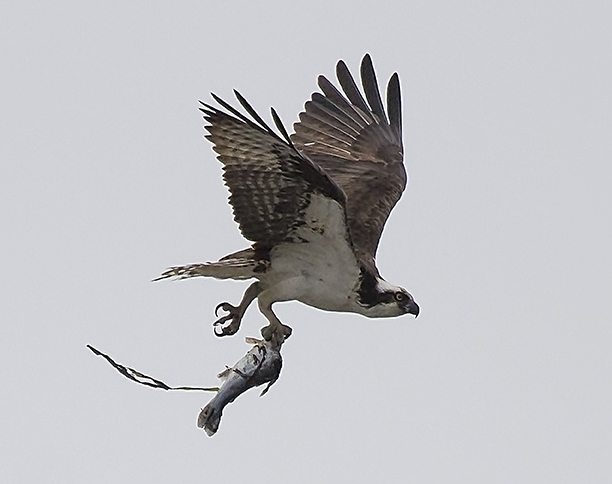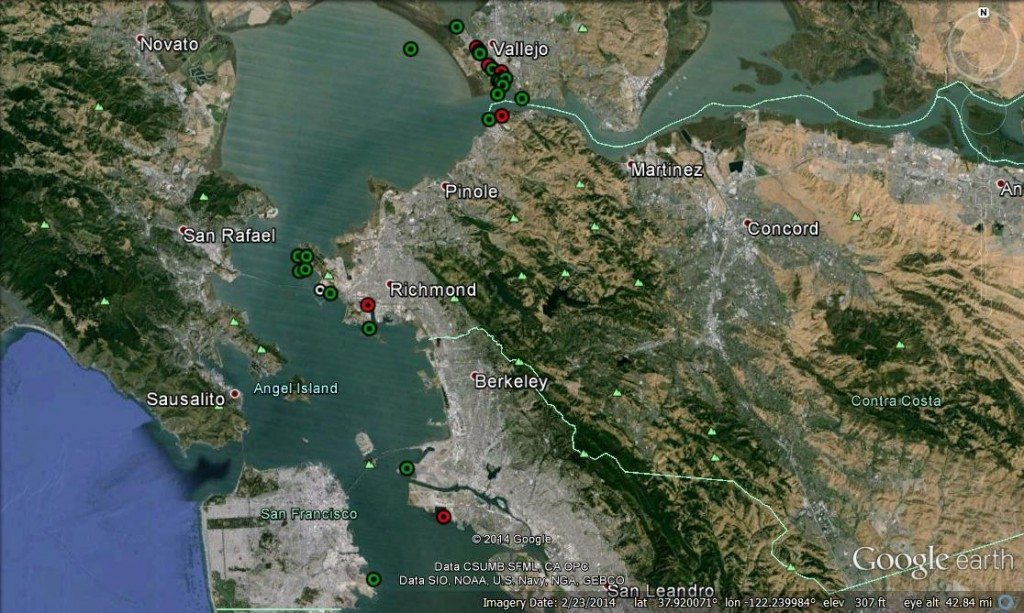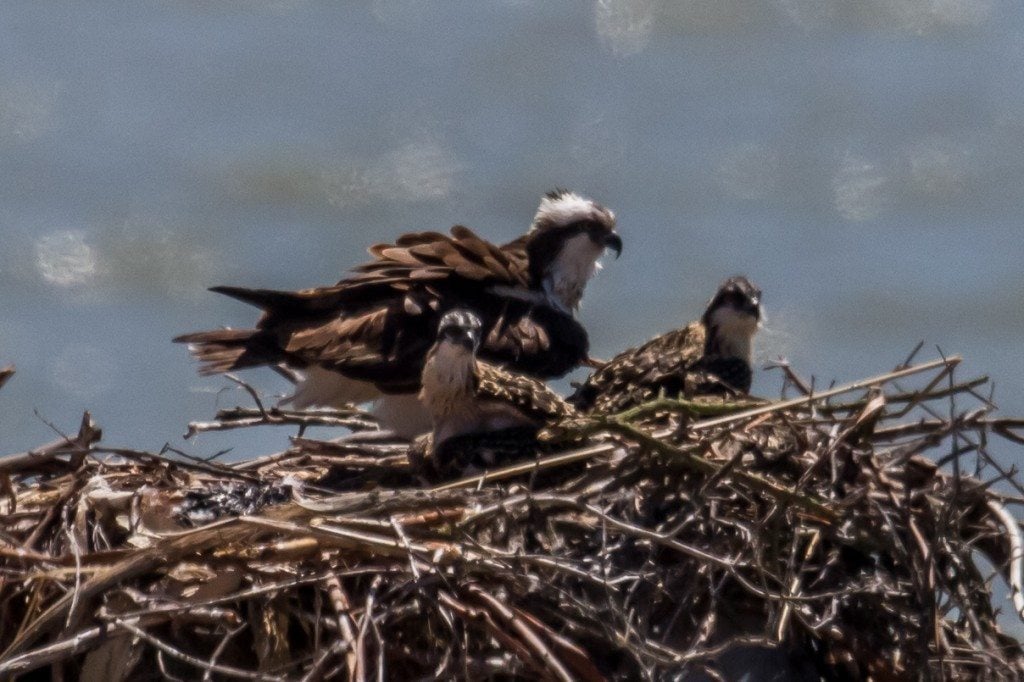Osprey starting to nest along the Bay
Golden Gate Bird Alliance is part of the Bay Area Osprey Coalition, a new group working to protect and educate the public about the growing number of Ospreys nesting along San Francisco Bay. We co-sponsored the second annual SF Bay Osprey Festival in June at Mare Island (Vallejo), and are working to encourage bayside property owners to install nesting platforms. The San Jose Mercury/Contra Costa Times ran an excellent story this week on the spread of nesting Ospreys to the Bay. We’re reprinting some excerpts below (including a quote from GGBA Executive Director Cindy Margulis), but you can read the entire story on the San Jose Mercury web site.
———————————
By Denis Cuff, Contra Costa Times
RICHMOND — The osprey, a fierce and powerful fishing bird, used to be just another San Francisco Bay shoreline visitor, flying over and feeding without setting down roots.
These days, however, the acrobatic divers are becoming natives, constructing elaborate stick nests on cranes, poles or other man-made structures. Ospreys nested in 21 places around the bay shorelines this year and 17 last year, up sharply from a single active nest in the early 1990s. Most of the new nests are in the East and North Bay.


Before that, ospreys steered clear of the bay, preferring to nest in areas far north of the Bay Area, or inland, especially near lakes. Scientists aren’t sure why the raptors have made the move. They speculate it may have something to do with changes in bay water quality, clarity and abundance of fish. Or it may have something to do with bald eagles — another species on the upswing — crowding ospreys out of their prime nest spots near lakes in the North Bay. “We don’t have all the answers, but the nesting territory is a significant change that has occurred in a relatively short period of time,” said Tony Brake, a volunteer bird monitor with the Golden Gate Raptor Observatory.
+ + + +
Although osprey populations were once threatened because of DDT contamination, the birds now prosper in many areas, living on every continent except Antarctica. They migrate through or winter in the Bay Area, and they have nested in the past around Lexington Reservoir near Los Gatos and Kent Lake in western Marin County. Lately, they have shown a preference for the East Bay shoreline.
+ + + +
Most of the new nest sites are in or near industrial areas in Richmond or Vallejo — spots with cranes, poles or platforms that provide substitutes for a tree snag or crown. The city of Richmond built a platform on a pier not accessible to the public, and ospreys nested there. Officials at the Chevron oil refinery in Richmond also built a platform to lure ospreys to nest and steer clear of their original destination: a power pole that could have electrocuted them, Brake said.

The growing population of ospreys along the shoreline has spurred new opportunities for cities or industries to build platforms as safe nesting spots, said Cindy Margulis, executive director of the Golden Gate Bird Alliance. “It’s a wonderful way for people to connect to wildlife,” Margulis said. Shoreline property owners also need be on the lookout for osprey nests. It is a violation of international migratory bird treaties and federal law to harm chicks in a nest, said Allen Fish, director of the Golden Gate Raptor Observatory. The Port of San Francisco last year ruffled birders’ feathers when it removed an apparent osprey nest from a crane needed for the America’s Cup yacht races. The U.S. Fish and Wildlife Service investigated and found no legal violations by the port, which said the nest was empty, Rebecca Rocca, an agency supervisor, said in an email. Fish advises property owners who find osprey nesting activity on their property or equipment not to remove nests without first consulting with the state Department of Fish and Wildlife. “Osprey can put together nests very fast,” Fish said. “If you have a place along the shoreline that could attract them, you could end up with an osprey nest in February or March.”



